
Winter in southern Andalucía can get chilly, but this year, finally, we are having a normal winter with rain, which after so many years of drought is something to celebrate. After the long Spanish Christmas, I’m back at my desk, working on the third book in my new historical fantasy series for Penmore Press, Doomsong.
‘Doomsong’ sounds a bit melodramatic, but it was the name of a sword in the ancient Norse Volsung Saga. Sigmund the Volsung pulled a sword named Gram (Anger), Doomsong and Truth-teller from the Barnstock Oak; the only person to do so.
Nowadays, this is classified as fantasy, but it comes from tales told around communal fires in the days of long-ago. Somewhere, there is truth in it. Just as somewhere there is truth in the tales of King Arthur and Excalibur. Perhaps they were meant as a warning against life’s perils, or human frailty. The stories in my new series, however, are grounded on early-medieval events.
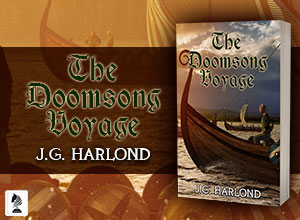
NEW RELEASE: The Doomsong Voyage by J.G. Harlond – PENMORE PRESS
I have come to writing historical fantasy rather late in my writing career, but I’ve been reading it for a good while. I’m talking here about books by Guy Gavriel Kay, and G.R.R. Martin’s Game of Thrones, which rests on a surprising amount of real history.
Kay’s stories are about real people in an imaginary version of Western Europe and include elements of real history. The Lions of Al-Rassan is in the fantasy genre, but it’s one of the best books on Spanish history I have ever read. Kay captures the power politics, racial and religious struggles of Moorish Spain so well through his characters that I lived every word – sensing that this is what it must have been like for real people. This, for me, is where historical fiction and fantasy come together, offering insight into the past. It’s also a liberating and fun way to write a story.
I wrote the first book (of what is to become a series) The Doomsong Sword, after preparing material for a Norse myths and legends project for a big publisher. They subsequently cancelled the project and I moved on to write more school textbooks. Sometime later, however, I returned to the Volsung Saga and began writing my version of the Sigurd, the Dragonslayer story.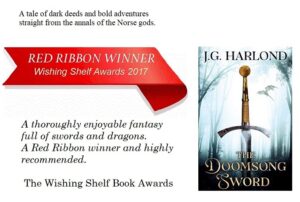
The idea for The Doomsong Voyage, came after reviewing a non-fiction Viking history, Children of Ash and Elm by Neil Price (Basic Books, 2020). Price has a flesh and blood approach to history, showing how people lived, what they believed, how and where they traded.
I spend time in Sweden visiting family every year so it isn’t hard for me to imagine those dark days, and they were dark because the eruption of a volcano covered the land with ash and blocked out the sun, making life even more difficult than it already was and bringing in Fimbulwinter – a never-ending winter. This is partly what forced early-medieval Scandinavians to find a new home on fertile land elsewhere.
Starting from this, I began the story of a young man named Finn, who sets sail on a Baltic trading knarr to find a pirate named Ice-heart in the Middle Sea. The pirate is a clan leader, who has the knowledge and force of personality required to persuade his people to leave all they know and cross the ocean to find a better life. He is not called Ice-heart without reason, though – to say more would be a spoiler. Finn is accompanied by a very strange girl with amber eyes, who is always nearby in moments of danger.
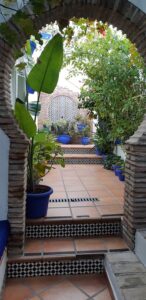 Having lived on the Mediterranean coast in Italy and Spain for more than half my life, I was familiar with how the Vikings raided and traded as far as the Levant. This fictional voyage also includes a version of Al-Andalus. My Independent state of Barbalus was the result of a weekend in the hill-top town of Vejer de la Frontera and staying in an old house with a patio like this.
Having lived on the Mediterranean coast in Italy and Spain for more than half my life, I was familiar with how the Vikings raided and traded as far as the Levant. This fictional voyage also includes a version of Al-Andalus. My Independent state of Barbalus was the result of a weekend in the hill-top town of Vejer de la Frontera and staying in an old house with a patio like this.
The Doomsong Voyage is under-pinned with documented history and includes an important current issue, the effects of a climate catastrophe. There is good deal of magic in the story, of course, but in those supposedly Dark Ages people believed in magic, shape-shifting, enchantments and curses, and the inexplicable power of the Aesir gods.
The next story is taking me back home to North Devon in the British West Country. I grew up on a Viking battlefield and I used to pass a monument at Bloody Corner in Northam almost ever day. The monument says:
“Stop Stranger Stop,
Near this spot lies buried
King Hubba the Dane,
who was slayed in a bloody retreat,
by King Alfred the Great”
Historians dispute precisely who fought whom and when, and I cannot believe King Alfred himself was involved, but there were at least two battles fought on the narrow stretch of land between Northam and Appledore between the 9th and 11th centuries. Whether Hubba (Ubbe) really did lead 33 dragonships into the estuary, as stated in the Anglo-Saxon Chronicle, I do not know, but it makes for a good story . . . Work-in-progress.
You can find the Doomsong stories (ebook or paperback) in most online stores via these universal links:
The Doomsong Sword
The Doomsong Voyage
Some other very good reading: Jean Gill’s Midwinter Dragon series .

‘an epic medieval saga of the last Vikings, set in windswept Orkney’
If you also enjoy literary historical fiction take a look at Kristin Gleeson’s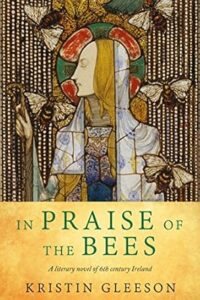 books about early medieval Ireland: In Praise of the Bees
books about early medieval Ireland: In Praise of the Bees

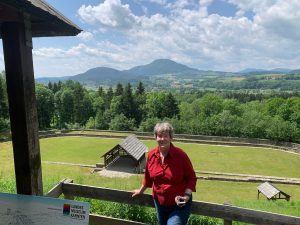
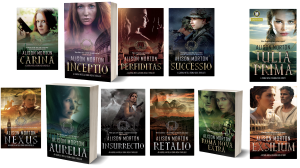
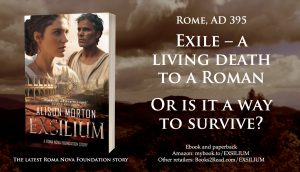
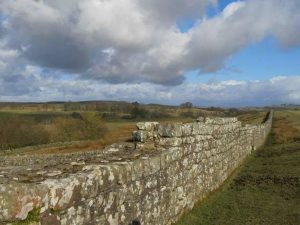
 I had a rural childhood of the sort almost unimaginable today. I grew up over 50 years ago, roaming fields and woods and lanes on foot or on my bike, often alone. I watched the progression of wildflowers over the summer; I watched planting and harvest.
I had a rural childhood of the sort almost unimaginable today. I grew up over 50 years ago, roaming fields and woods and lanes on foot or on my bike, often alone. I watched the progression of wildflowers over the summer; I watched planting and harvest. The series isn’t set in the real world, but neither is it truly a fantasy world. There are no variations from the laws of physics or nature, only (barely) a fantasy geography. There are no fae or otherworldly creatures, only the flora and fauna of northern and central Europe.
The series isn’t set in the real world, but neither is it truly a fantasy world. There are no variations from the laws of physics or nature, only (barely) a fantasy geography. There are no fae or otherworldly creatures, only the flora and fauna of northern and central Europe.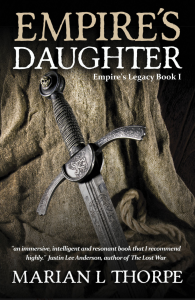 Many generations past, the great empire from the east left Lena’s country to its own defences. Now invasion threatens…and to save their land, women must learn the skills of war.
Many generations past, the great empire from the east left Lena’s country to its own defences. Now invasion threatens…and to save their land, women must learn the skills of war.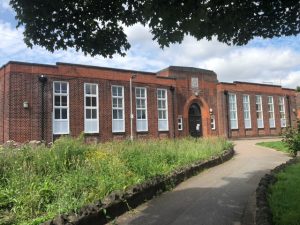
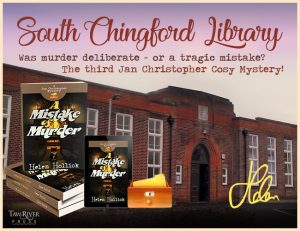
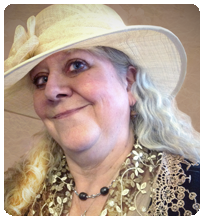

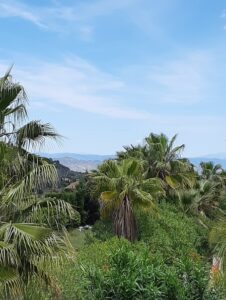 From my desk here in the Province of Málaga I can see the Sierra de Las Nieves. This was where the Moors of Al-Ándalus used to harvest snow to be collected in summer for sherbet and to keep medicines cool. To the right out of a large picture window is the bandalero country of The Empress Emerald; to the left, beyond mauve-shaded mountains, are ancient fishing villages now known as the Costa del Sol, but once prey to the Barbary corsairs featured in The Chosen Man Trilogy.
From my desk here in the Province of Málaga I can see the Sierra de Las Nieves. This was where the Moors of Al-Ándalus used to harvest snow to be collected in summer for sherbet and to keep medicines cool. To the right out of a large picture window is the bandalero country of The Empress Emerald; to the left, beyond mauve-shaded mountains, are ancient fishing villages now known as the Costa del Sol, but once prey to the Barbary corsairs featured in The Chosen Man Trilogy. 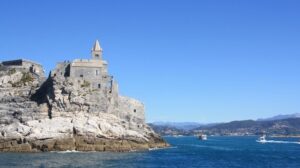
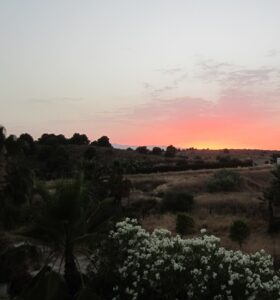 Despite my somewhat Latinized outlook, though, what I see through my Spanish picture window when I am at my desk in Málaga is still with a realistic Englishwoman’s eyes.
Despite my somewhat Latinized outlook, though, what I see through my Spanish picture window when I am at my desk in Málaga is still with a realistic Englishwoman’s eyes.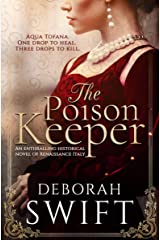 If, like me, you enjoy novels that takes you into the past and/or far away, check out the excellent Bristish historical fiction author, Deborah Swift. She has a new novel set in 17th century Italy out now, too.
If, like me, you enjoy novels that takes you into the past and/or far away, check out the excellent Bristish historical fiction author, Deborah Swift. She has a new novel set in 17th century Italy out now, too.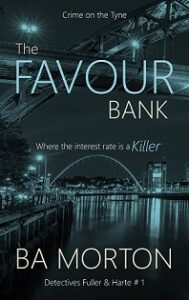 If you enjoy gritty, contemporary British police crime fiction, try B.A. Morton’s frightening, heart-rending ‘Crime on the Tyne’.
If you enjoy gritty, contemporary British police crime fiction, try B.A. Morton’s frightening, heart-rending ‘Crime on the Tyne’.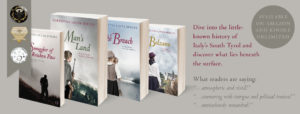
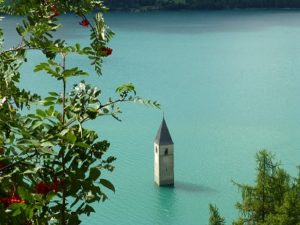
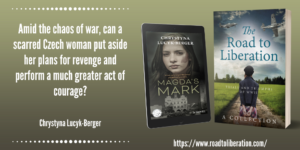


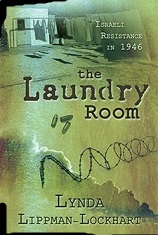 The Laundry Room is an example. It all began with a promise and a prayer. The new rabbi at my synagogue stood on the pulpit of his congregation during the High Holidays promising to take a group to Israel in the near future. My husband and I were two of the first to sign up.
The Laundry Room is an example. It all began with a promise and a prayer. The new rabbi at my synagogue stood on the pulpit of his congregation during the High Holidays promising to take a group to Israel in the near future. My husband and I were two of the first to sign up.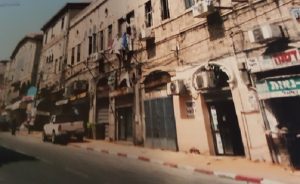 The traffic was almost as bad as New York’s. Our first stop was on the Mount of Olives, a part of the Judaean Mountain chain and the ancient Judean kingdom. It was there we beheld Jerusalem and all of its splendor as the sun set in the west, casting a golden glow over the city, hence Jerusalem of Gold, a popular Israeli song. We left the mountain and headed toward the coast and the center of Tel Aviv, a thriving metropolis with signs of bombed buildings next to new. The contrast was startling to say the least.
The traffic was almost as bad as New York’s. Our first stop was on the Mount of Olives, a part of the Judaean Mountain chain and the ancient Judean kingdom. It was there we beheld Jerusalem and all of its splendor as the sun set in the west, casting a golden glow over the city, hence Jerusalem of Gold, a popular Israeli song. We left the mountain and headed toward the coast and the center of Tel Aviv, a thriving metropolis with signs of bombed buildings next to new. The contrast was startling to say the least. Little remains, but some of the mosaics that have managed to survive time and ware, are magnificent. The clear, aqua waters of the Mediterranean wash gently upon the shore, spilling over into the largest natural pool I’ve ever seen.
Little remains, but some of the mosaics that have managed to survive time and ware, are magnificent. The clear, aqua waters of the Mediterranean wash gently upon the shore, spilling over into the largest natural pool I’ve ever seen.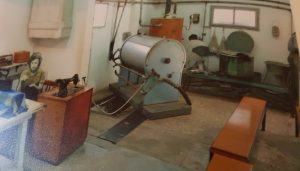 I could go on and on, but for some reason, it was the Ayalon Institute that held fast. I tried to do some research when I returned home, but there was little. I wrote to the institute to ask for a brochure, but instead received a personal email from a Judith Ayalon, one of the 45 youth that built, supplied, and ran an underground ammunition factory that would play a major role in the establishment of Israel as an independent country. She and I would correspond for the next two years. The visual of teenagers fashioning bullet casings out of copper or filling those casings with gunpowder is hard to erase. There was nothing special or memorable about the terrain, but what took place there will never be erased from my mind. A well-kept secret until 1986, this historic site has become a major stop for those visiting Israel and a place I will never forget. The Laundry Room covers those historic events from beginning to end.
I could go on and on, but for some reason, it was the Ayalon Institute that held fast. I tried to do some research when I returned home, but there was little. I wrote to the institute to ask for a brochure, but instead received a personal email from a Judith Ayalon, one of the 45 youth that built, supplied, and ran an underground ammunition factory that would play a major role in the establishment of Israel as an independent country. She and I would correspond for the next two years. The visual of teenagers fashioning bullet casings out of copper or filling those casings with gunpowder is hard to erase. There was nothing special or memorable about the terrain, but what took place there will never be erased from my mind. A well-kept secret until 1986, this historic site has become a major stop for those visiting Israel and a place I will never forget. The Laundry Room covers those historic events from beginning to end. by Mary Donnarumma Sharnick
by Mary Donnarumma Sharnick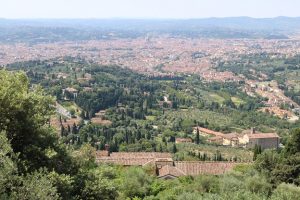 When I first visited Fiesole with my husband during the summer of 2002, I was smitten. With its ancient Etruscan walls, Roman baths and amphitheater, fourteenth-century town hall, the Monastery of San Francesco, several churches, the novice home of Fra Angelico in San Domenico, the town offered historical narratives at every turn. Villa Le Balze (Georgetown University’s study-abroad campus), Villa Sparta (former residence of the Greek royal family), and numerous other distinguished domiciles each offered detailed accounts about their inhabitants, visitors, interlopers, intimates, and detractors. Living in and near the town for periods of time over the course of the nineteenth- and twentieth-centuries have been: French writer Marcel Proust, American art historian Bernard Berenson, German painter Paul Klee, Gertrude Stein and Alice B. Toklas, and American architect Frank Lloyd Wright. The town is known as the most affluent suburb of Florence.
When I first visited Fiesole with my husband during the summer of 2002, I was smitten. With its ancient Etruscan walls, Roman baths and amphitheater, fourteenth-century town hall, the Monastery of San Francesco, several churches, the novice home of Fra Angelico in San Domenico, the town offered historical narratives at every turn. Villa Le Balze (Georgetown University’s study-abroad campus), Villa Sparta (former residence of the Greek royal family), and numerous other distinguished domiciles each offered detailed accounts about their inhabitants, visitors, interlopers, intimates, and detractors. Living in and near the town for periods of time over the course of the nineteenth- and twentieth-centuries have been: French writer Marcel Proust, American art historian Bernard Berenson, German painter Paul Klee, Gertrude Stein and Alice B. Toklas, and American architect Frank Lloyd Wright. The town is known as the most affluent suburb of Florence.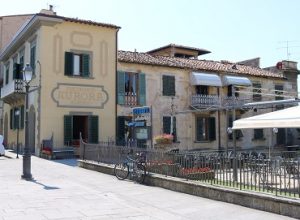 Also illustrative of historical layering is the Hotel Villa Aurora, just steps from the bus stop in Piazza Mino. Recently closed, the hotel was still in 2018 housing visitors to Fiesole.
Also illustrative of historical layering is the Hotel Villa Aurora, just steps from the bus stop in Piazza Mino. Recently closed, the hotel was still in 2018 housing visitors to Fiesole.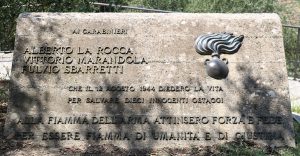 Every character must re-assess and re-consider what they knew or thought they knew in 1944, what they know or think they know in 1989. The inevitable and irrefutable corollary, of course, follows as a question: What is the relationship between the historical record and a human being’s experienced life? This is the question The Contessa’s Easel explores.
Every character must re-assess and re-consider what they knew or thought they knew in 1944, what they know or think they know in 1989. The inevitable and irrefutable corollary, of course, follows as a question: What is the relationship between the historical record and a human being’s experienced life? This is the question The Contessa’s Easel explores.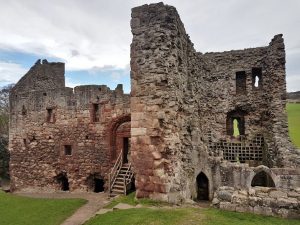

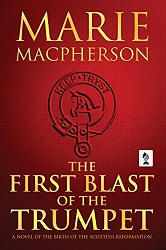 At midnight on a doom-laden Hallowe’en three young lasses sit round the hearth in the West Tower, gazing into the flames trying to divine their future. From this fortress perched high on a rocky outcrop on the banks of the River Tyne, accessible only by a narrow farm track, the powerful Hepburn family, the Earls of Bothwell, controlled the lands of East Lothian. Though now a ruin, this hidden gem retains many features still recognisable enough to fire the novelist’s imagination. In the Great Hall, the earls would host grand banquets prepared in the vaulted kitchen underneath where scullions would turn spits over huge fires; children would scamper up and down the turnpike staircases of the three towers, and prisoners would languish in the two pit prisons or oubliettes – one of which is said to have contained George Wishart after his arrest. What must it have been like to have been lowered down into a pit and left in complete darkness on a freezing winter’s night?
At midnight on a doom-laden Hallowe’en three young lasses sit round the hearth in the West Tower, gazing into the flames trying to divine their future. From this fortress perched high on a rocky outcrop on the banks of the River Tyne, accessible only by a narrow farm track, the powerful Hepburn family, the Earls of Bothwell, controlled the lands of East Lothian. Though now a ruin, this hidden gem retains many features still recognisable enough to fire the novelist’s imagination. In the Great Hall, the earls would host grand banquets prepared in the vaulted kitchen underneath where scullions would turn spits over huge fires; children would scamper up and down the turnpike staircases of the three towers, and prisoners would languish in the two pit prisons or oubliettes – one of which is said to have contained George Wishart after his arrest. What must it have been like to have been lowered down into a pit and left in complete darkness on a freezing winter’s night? Marie Macpherson hails from from the historic town of Musselburgh, six miles from the Scottish capital Edinburgh, but left the Honest Toun to study Russian at Strathclyde University. She spent a year in the former Soviet Union to research her PhD thesis on the 19th century Russian writer, Mikhail Lermontov, said to be descended from the poet and seer, Thomas the Rhymer.
Marie Macpherson hails from from the historic town of Musselburgh, six miles from the Scottish capital Edinburgh, but left the Honest Toun to study Russian at Strathclyde University. She spent a year in the former Soviet Union to research her PhD thesis on the 19th century Russian writer, Mikhail Lermontov, said to be descended from the poet and seer, Thomas the Rhymer.